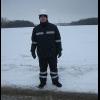Using dry product gas as stripping gas is indeed a good practice. Heavy, wet gases as Dmitry intends to use are associated with following implications:
1)It is water saturated at condensate flash durum outlet. Therefore, has high water content.
2)Heavy gases naturally have lower water holding capacity. When you bring this gas in contact with rich TEG, it will absorb less water from TEG as compared to a lean gas.
So high water is one of the limitation for such a service. But when you flash this gas to a low pressure, it becomes under-saturated. Its water absorption capacity increases. Subsequently, when you preheat the gas to a suitable temperature (say 250 degF), it is able to take more water from the TEG and now it is a decent stripping gas. Off course, compared to a dry lean gas, required flow rate for this type of gas may be significantly high.
However, i would use this gas only if it has no other utility (.e.g it was being flared) and It provides a decent reduction in operating cost. Such gas should not be a favorite one as people like Art dont like it.
By the way, you must have heard abut Drizzo Process for TEG regeneration. It uses a heavy solvent which is vaporized and used as stripping gas. The overhead gas is cooled and the solvent is recovered and re-used. Nobody knows about the exact composition but it is believed to be C5+. One of the logics to use a heavy solvent is to make the solvent recovery easy as it will be condensed easily out of the overheads.
Mr. Art,
If heavy gases are troublesome for TEG regenerator, how does C5+ gas works good.
Dmitry,
Just flash the gas to low pressure, use a fuel gas scrubber as pressure reduction may lead to low temperature which may cause condensation and then pre-heat the gas. Your stripping gas is ready to use.

 FB
FB












